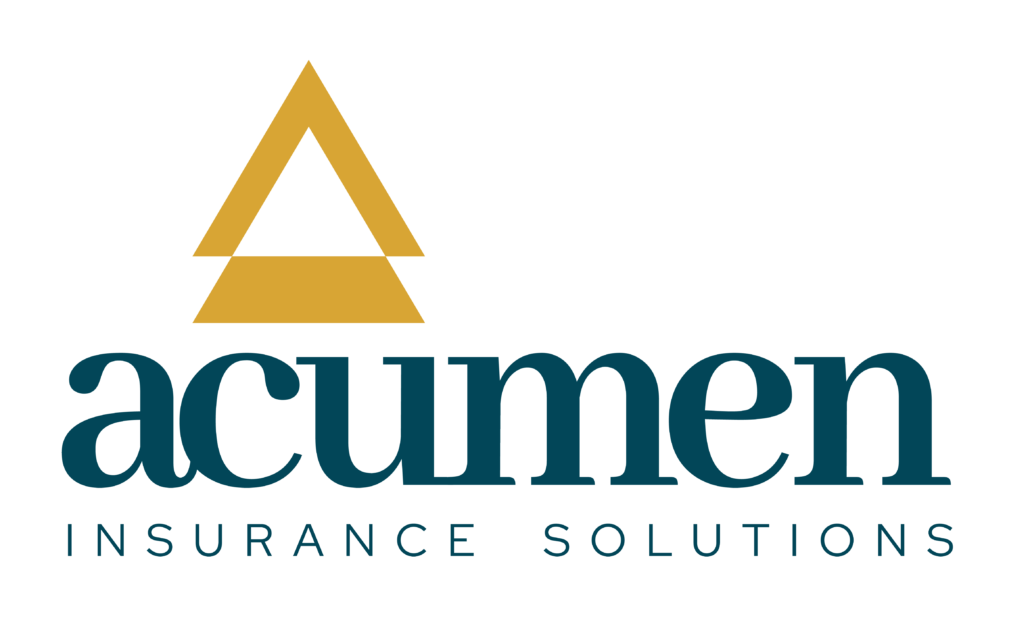Top Six Reasons Why Smart Business Owners Use Life Insurance
Life insurance is a crucial component of maintaining and growing a successful company
Most smart business owners recognize the importance of using life insurance to protect themselves, their families, and their companies. They use life insurance as a financial tool to solve problems associated with maintaining and growing a successful company, as well as to meet retirement, succession, and estate planning goals.
Succession Planning for Business Owners
Protecting the entity and deciding when and whom to eventually transfer it to, is a critical aspect of succession planning for business owners.
The particular tools and techniques used in a business succession plan will depend on the goals and objectives of the four groups most impacted:
- The senior generation business owner
- The junior generation family member involved in the business
- Key non-family employees, and
- Family members not involved in the business
Below are the top six reasons why smart business owners use life insurance as a key component in their strategic business succession, retirement, and estate planning.

#1: Protect the Business at the Death of an Owner or Key Person
In many small businesses, the owner is also the key person in the company.
Key-person life insurance is purchased on the business owner’s life to protect the company if they unexpectedly die. In fact, the death of a key person in a small company without key-person insurance often results in the immediate shuttering of the company.
With key-person insurance, the company:
- Purchases a life insurance policy on the key employee
- Pays the premiums, and
- Is the beneficiary of the policy
If that key person unexpectedly dies, the company receives the insurance proceeds.
The Benefits of Key-Person Life Insurance
Key-person life insurance for the business owner can provide much-needed stability. If the business owner dies, the business receives the policy proceeds and can use the funds to:
- Pay expenses while searching for and hiring a capable replacement
- Retire debts
- Distribute money to investors
- Pay severances to employees
- Explore options other than immediately going out of business, and/or
- Buy time until the business can be closed, and the assets liquidated
In addition, many family-owned businesses depend on non-family employees for the company’s continued success.
To guard against financial loss due to the death of a key employee and to ensure that the business stays in the family, many privately-held companies acquire key-person life insurance for their key employees.
#2: Protect the Owner’s Family and Ensure the Survival of the Business
A buy-sell agreement is a legally binding contract that states that in the event of an owner’s death, disability, retirement, or separation from the company, the owner’s interest in the company must be sold back to the business or to the remaining owners at agreed-upon terms.
Buy-sell agreements are crucial for small and closely-held companies where, as in many cases, the death or disability of a business owner creates a significant financial burden on the family, the business, and the remaining owners.
A buy-sell agreement guarantees a market and a fair price for the business interests, ensures control over the business by the remaining owners, and can set the value of the business interest for estate tax purposes.
Life insurance for each owner is the best way to provide the cash necessary for the business or the surviving owners to purchase the deceased owner’s share of the business. Death benefits are typically paid as a tax-free lump sum to the entity or surviving owners.
In many instances, the cash surrender value in a permanent life insurance policy can also be accessed tax-free via policy loans and withdrawals to help pay for a lifetime purchase of a business owner’s interest, such as due to retirement or disability.
Depending on the type of buy-sell agreement, the business itself or the individual owners acquire a policy on each owner so that at death or disability, the funds needed to “buy out” the deceased owner’s interest are readily available.
#3: Accumulate Assets for Retirement
In addition to protecting the company, many business owners use cash value life insurance as a diversified vehicle, separate from the performance of the company, to accumulate assets and build future retirement income for themselves and their key employees.
Permanent life insurance policies include a cash value account that grows tax-deferred and can be accessed tax-free via withdrawals and policy loans while the insured is living. The type of life insurance policy depends on the desired objectives and other factors.
In many cases, business owners and key employees earn levels of income that exceed the contribution limits under a 401(k), profit sharing, or other qualified retirement plans. There are no contribution limits on non-qualified, private life insurance-based plans that provide additional retirement income.
Read on to learn more about the difference between term life insurance vs. permanent life insurance.
The Benefits of Properly Structured Life Insurance
Properly structured life insurance in a non-qualified plan is a legitimate option to grow wealth. It can provide members of the senior generation with death, disability, and retirement benefits, especially when the senior members have transitioned the business to the junior members and are no longer receiving compensation.
This combination of tax-advantaged death benefits and cash values makes life insurance the best way to accumulate and grow funds for retirement while simultaneously providing the cash necessary for the business or the surviving owners to purchase a deceased owner’s interest.
Often referred to as “golden handcuffs,” the same concept is often used as a way to attract and incentivize key employees to remain with the business and perform with the promise of future retirement income from policy cash values. The business is simultaneously protected against the loss of a key person.
#4: Protect Assets from Liabilities and Future Creditors
Businesses assuming the risk of potential environmental contamination (i.e., waste hauling, landfills, chemicals, etc.) are subject to liability under federal and state pollution laws.
Service firms, including the following examples, are often exposed to professional liability claims:
- Law and accounting firms
- Physicians’ groups, and
- Engineering and architectural firms
Moreover, such liability is not limited to the business itself, as the business owners also may be personally liable under such laws. As the business passes to the next generation, so does the potential liability.
Life insurance is ideal in this situation. The business owner can establish an irrevocable life insurance trust (ILIT) to last for the maximum period permitted by state law (in perpetuity for some states).
The ILIT would provide the business owner’s heirs with income and principal as needed for health, education, maintenance, and support.
If properly structured, the assets in the ILIT cannot be reached by the beneficiaries’ creditors. Additionally, in many states, life insurance cash value is protected from creditors making it an especially effective tool for business owners to use to grow their assets.
#5: Prevent a Family Feud
A senior generation business owner can use life insurance and a common legal agreement to transfer assets to other family members with “equitable” treatment.
Leaving the ownership and control of the business to the children who are active and the life insurance proceeds to the children who are inactive equalizes the inheritances among them and creates a family “bank.”
This can prevent arguments about money when the senior generation is no longer there to serve as the peacemaker and allow the family business to continue operations smoothly.
In addition, it avoids the need for active children to purchase the business interests of inactive children, perhaps when the business may not be able to afford it.
Depending on the particular circumstances, the insurance may be owned by an ILIT for the benefit of the inactive children, and the insured may be the business owner, the business owner, and his or her spouse.
#6: Say “Goodbye” to Uncle Sam
Some senior generation business owners wait until death to transfer all or most of their business interests to the junior generation.
If the business owner has a taxable estate, life insurance can provide the recipients of the business with the cash necessary to pay estate taxes. With estate tax exemptions likely decreasing in coming years, many business owners and their families will face increased transfer tax liabilities.
Using life insurance to pay estate taxes is particularly useful for business owners because their equity interests cannot be readily liquidated. The junior generation receiving the business may also need life insurance to pay estate taxes.
Usually, the insurance policy will be owned by an ILIT, as discussed above, so that beneficiaries will receive the death proceeds both income and estate tax-free.
In many cases, most of the business owner’s estate is tied up in the value of the business. Without an effective estate plan, including a business succession plan, the business may have to close or be liquidated to afford estate taxes.
With the proper use of life insurance, a business owner can provide the liquidity needed to pay any estate taxes due at death.
For example, an ILIT can be established for the purposes of owning a life insurance policy on the life of the business owner (or business owners, if married). The trustee of the trust is usually the intended beneficiary. At the owner’s death, the policy proceeds are payable to the trust which can then, at the trustee’s direction, be used to pay any applicable estate taxes.
Read on to learn more about maximizing your legacy using life insurance.
A Final Word
At Acumen Insurance Solutions, we recognize that formulating the perfect succession, estate, and life insurance plans can prove difficult. Contact us today to review such plans.
Then, read on for more information on succession planning amidst the Great Resignation.
*Acumen Insurance Solutions does not provide legal or tax advice, and the information contained herein should not be construed as such; consult your legal and tax professional before making important financial decisions. Life insurance is backed by the claims-paying ability of the carrier and is not FDIC insured. Withdrawals and loans can reduce death benefits and may cause the policy to lapse. See policy illustration for details.
The following federal tax code sections apply to life insurance:
- IRC §101 (a): Death benefits are income tax-free.
- IRC §7702 (a), (g): Cash value growth is tax-free.
- IRC §72(e): Withdrawals of cash value to basis are tax-free.
- IRC §72 (e)(5): Investment gains in cash value can be borrowed tax-free.
- IRC §7202 (a): Modified Endowment Contracts (MECs) retain tax-free growth and tax-free death benefit, but gains are taxed first when taking loans and withdrawals.




